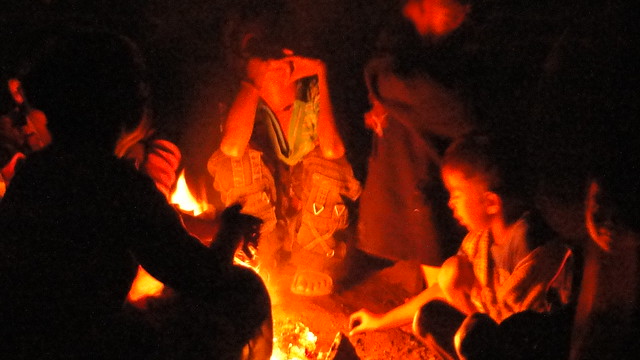By Saiyed Danish, TwoCircles.net,
New Delhi: In Ghazipur village of East Delhi, the slum dwellers have their own long list of grievance. On Monday, 180 make shift huts had caught fire there.
“It is the twelfth time the slum has caught fire due to faulty lines and electrical metres this year,” said Sheikh Hasnur who lives there. “We have no roof over our head. Winters add to our worries as kids get sick frequently and plastic coverings fail to brave chilling winds. They only need our votes and give us nothing in back,” he adds, showing his voter card.

Delhi goes to assembly polls in two weeks. Various political parties and their sitting representatives from across the length and breadth of Delhi are busy highlighting their achievements in their respective constituencies. In similar spirit, Delhi government is also riding high on its claims of successful implementation of many of its schemes and policies targeting slum dwellers.
If the estimates of Delhi Urban Shelter Improvement Board (DUSIB) are to be believed, over 1.4 crore people live in about 700 slum clusters, Jhuggi Jhopris and 1,218 unauthorized colonies across the city. The only thing which pulls the politicians hailing from posh enclaves to dingy environs of slums is the fact that these poor people are voters too.
The district of Kirari Suleiman Nagar in North-West Delhi, which comprises of 90% population of slum dwellers out of which 40% are Muslims, will be hotly contested by BJP MLA Anil Jha, Rajan Prakash from Aam Aadmi Party and Amit Malik from Congress. All will leave no stone unturned in wooing slum dwellers.
“We have dried and half constructed sewers in Kirari which are used as benches to sit on. After Supreme Court roared over the 532 colonies in Delhi which had received the provisional certificates of regularization in 2008 by Sheila Dikshit governement, situation has been improved but the credit goes to SC and not the political leaders who want to reap the harvest of SC driven developmental works for their own gains. Slum people are going to teach them a lesson this time,” says Rajan who is also a social activist from Kirari.

Likewise RK Puram in South-West has 70-75% people living in slums and candidates are already engaging with the poor in their respective ways. In North-East, four slum-dominated constituencies- Seemapuri, Gokulpuri, Mustafabad, Karawal Nagar will decide the fate of candidates in the region where Arvind Kejriwal is vehemently campaigning. Besides the epicentre of power in Nand Giri, Mustafabad, Wazirpur, Madipur, Najafgarh, Narela, Bawana, Badarpur, Model Town, Kalkaji assembly seats will be the slums in the area.
In this hyper-charged atmosphere of political kerfuffle the Delhi government represented by the 43 seat strong Congress party has immersed itself into hastily finishing up pending housing projects for the slum dwellers.
According to the government, 68,000 dwelling units are being constructed to accommodate slum dwellers in Delhi under JNNURM scheme. An additional of 15,000 low-cost flats are being constructed by the government to help economically weaker sections of the society.
“The cost will have to be shared and the slum dwellers will have to pay around Rs. 65,000 for which they will be given the time of 15 years,” says Ramendra Kumar of Delhi Shramik Sangathan (DSS), whose organization led a campaign to secure the poor workers’ and labourers’ right to life with dignity. Labour class forms an integral part of slum dwellers as in many slum areas and are engaged in jobs from manual scavenging to litter gathering and rickshaw pulling.

The lack of political will on the part of Delhi government to rehabilitate slum dwellers surfaced when DSS formed some loopholes in the government’s Delhi Slum Policy. “The policy had flaws as it stated that only that slum dwellers who arrived in Delhi before 1998 would fall under the policy which meant that 85% of slum dwellers will not be able to claim a home so we protested and campaigned and it is only now that they have agreed that the new cut off will be June 2009 as result only one slum cluster was destroyed by the hit list of 44 it had made in the past years,” he informs.
At many places like Narela, Bawana and Dwarka, the flats are ready but bureaucratic hurdles, land mafia’s intervention, corruption, and other prerequisites like proper fencing, wiring, establishing water and sewer lines, insufficient ID proofs are preventing authorities to hand over the flats to the slum dwellers.
